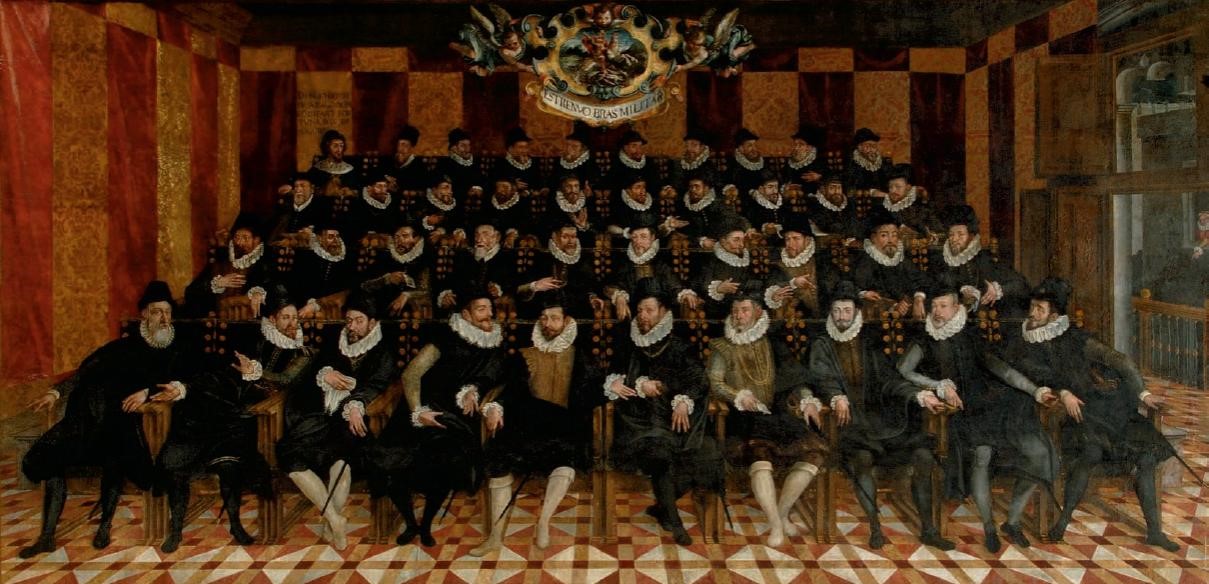The Valencian nobility of the sixteenth century was not large and less rich than the Catalan and Aragonese ones
- Scientific Culture and Innovation Unit
- December 17th, 2019
An ostentatious lifestyle and the poor administration of their assets accelerated the loss of economic power of the nobility in the Kingdom of Valencia, according to research conducted by Pablo Pérez García, Professor of Modern History at the University of Valencia (UV). The strengthening of Absolutism also diminished the influence of the approximately 2,000 people who formed the Valencian aristocratic or military establishment. The UV has celebrated this month a congress dedicated to Germania, a great social revolt of an anti-furniture look, for its 500th anniversary.
The investigation shows that this delicate economic situation of the aristocracy contrasted with its material power, given that it owned 67% of the municipalities of the Kingdom of Valencia, which represented 55% of the territory. In total, it exerted its lordly authority over 47% of the population throughout the entire Valencian geography. However, Pérez García points out that the agrarian possessions of the Aragonese or Catalan nobility were of much greater extent and economic potential.
The article «La nobleza valenciana del Quinientos. Dimensión social y nomenclatura», published in the e-Spania journal, indicates the sources of income to which they resorted to preserve their high standards of living, which included services to the king, investments in business and capital and leasing of taxes.
The study also reveals the reasons behind the political crisis that the nobility went through in the sixteenth century. Unlike the rest of European aristocracies, the Valencian one did not participate in any large military company, such as the conquest of America. Moreover, the rise of monarchical absolutism was largely incompatible with the prerogatives reserved for the nobility. To these factors are added the citizen revolts that occurred at the beginning of the century, such as the Germanías, and the strong impact of secular inflation.
The author emphasises that the nobility articulated legal tools to avoid an atomisation of their properties that could result in a greater loss of power of noble families. In particular, they structured three mechanisms to maintain their social position. The first one was the universal inheritance and the linkage, that is, the obligation to preserve the assets in a perpetual way within the family. The second was the circulation of the dowries within the same lineages. Finally, Pérez García mentions the marital privilege, which enabled noble widowers to retain the dowry of their deceased wives without offspring.
The study estimates that the nobility of the Kingdom of Valencia was formed by some 2,000 heads of lineage at the beginning of the fifteenth century, which represented around 0.6% of the total population, up to 2% if we count all the members of the family. This percentage was similar to the rest of the European territories, but lower than in Castile, where the nobility could constitute up to 10% of the population.
The aristocracy also suffered a cultural and identity crisis, the text affirms, since it was not at the same level as the European and peninsular nobility when it came to leading the cultural manifestations of the Renaissance, in matters such as literature, urbanism, arts or music, among others. An example of this situation was that the Valencian nobility did not engage in the religious conversion of their Moorish vassals, thus contributing to legitimise their expulsion and exile. This situation allowed the noblemen and lords of vassals to “socialise” their own economic losses as the dominant elite.
The research also identifies a series of different courtesy treatments received by members of the nobility, which can serve as a guide to place the individuals of the time within a hierarchy or social scale. For example, the noble don treatment was used for the major nobility and magnífic mossèn for the minor nobility, the knights.
Congress on the Germanía of Valencia
The University of Valencia has organised between December 2 and 4 the research seminar entitled La Germanía, 500 años. Un conflicto entre dos épocas. The conference, co-organised by Pablo Pérez García, addressed the causes of this popular claim, which resulted in the death of about 12,000 people on the battlefield and a thousand death sentences. The revolt was led by the bourgeois, liberal and media professionals, who denounced an aristocratising nature of Valencian society in the early sixteenth century. Among many other objectives, the Germanía tried to make the town have two representatives within the so-called Secret Council of the city, the governing body of Valencia, so far composed exclusively of members of the nobility and the urban patriciate.
Article:
Pablo PÉREZ GARCÍA «La nobleza valenciana del Quinientos: lo social y su nomenclatura», e-Spania [Online], 34, published on October 9, 2019. URL: http://journals.openedition.org/e-spania/32914. DOI: 10.4000/e-spania.32914
Photo caption (annex): Group portrait of the Valencian nobility that was part of the military wing, frescoed by the Savoyard painter Francesco Posso (c. 1593). Court Hall of the Palace of the Generalitat Valenciana.
File in: Recerca, innovació i transferència , Investigació a la UV , Internacionalització recerca , Producció científica , Difusió i comunicació científica , Grups de recerca , Facultat de Geografia i Història



















